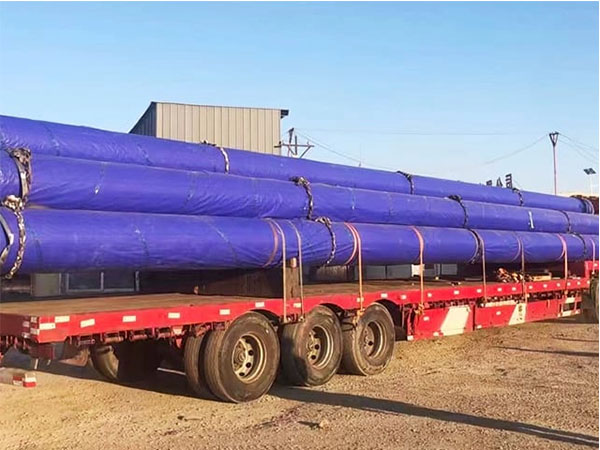LSAW (Longitudinal Submerged Arc Welded) steel pipes are manufactured by longitudinal Submerged arc welding. First, steel plates are rolled into tube blanks, and then longitudinal welds are formed through inner and outer submerged arc welding. This process is widely used in the production of large-diameter (>24 inches /610 millimeters) and thick-walled transmission pipelines, especially suitable for long-distance transportation of oil and gas.

Process flow and technical characteristics
JCOE forming: The sheet is cut to the required size, then formed into a J shape through a roller. The edges of the sheet are trimmed to be parallel for subsequent welding. After that, it is further formed into a C shape through a forming machine and corrected to ensure the ellipticity and straightness of the tube blank. Finally, the sheet is expanded to form the final O-shaped tube blank.
Double submerged arc welding for both inner and outer welding: Pre-weld the inner layer in a submerged arc and repair weld the outer layer to form a longitudinal weld seam, which has high strength.
Whole pipe flaring: Eliminate residual stress in the weld seam, improve the geometric accuracy of the steel pipe, and reduce the risk of stress corrosion and rupture.
Non-destructive testing and quality inspection: 100% ultrasonic and radiographic testing, hydraulic tests, etc. are carried out on steel pipes to ensure the integrity and qualification of weld seams.
The specifications are diverse and flexible: OD 406-1524 mm, wall thickness 6-60 mm (larger), length up to 18 m or more can be achieved, and widely comply with API 5L, ASTM, ISO and other standards.
Advantages in oil and gas applications
1. Suitable for large-diameter transportation: Due to the straight seam design, it is mainly used in long-distance oil and gas pipelines larger than 24 ", capable of simultaneously meeting the demands of high flow and high pressure.
2. Excellent weld quality: Double submerged arc welding both inside and outside, with a high degree of automation, the weld is dense, consistent in performance, and has a low defect rate, making it highly suitable for critical fields.
3. High structural and dimensional accuracy: After the pipe expansion treatment, the geometric tolerance is small, making the on-site welding more efficient and the connection more accurate.
4. Anti-corrosion and convenient coating application: Straight seam steel pipes are easy to be coated with FBE, 3PE and other coatings, and the impact of the weld seam on the coating is relatively small, with excellent overall anti-corrosion effect.
The main application scenarios in oil and gas transportation
Long-distance land-based oil transportation trunk lines
Typical projects: Cross-regional long-distance pipelines for crude oil and natural gas, with pipeline lengths ranging from several hundred to over a thousand kilometers.
Advantages: The large diameter (≥ 24 ") and thick-walled design can significantly reduce the unit conveying pressure drop, decrease the number of relay pump stations or compressor stations, and lower the overall operating cost.
2. Submarine oil/gas pipelines
Environment: Deep sea (with a depth of over 1,000 meters) - ultra-deep sea high-pressure and highly corrosive environment.
Requirements: During manufacturing, it must meet the strict low-temperature impact requirements (-40 ℃ or even lower), and undergo rigorous coating and cathodic protection designs.
Application: Gathering and transportation pipelines in offshore oil fields, large submarine natural gas pipelines.
3. Oil and gas production water injection pipelines and thermal recovery pipelines in oil fields
Special media: Corrosive fluids containing H₂S and CO₂, or thermal oil Wells injected with high-temperature steam for oil displacement.
Higher requirements are placed on the corrosion resistance and high-temperature resistance of materials. Low alloy or alloy steel grades resistant to hydrogen sulfide corrosion can be selected.
Summary
LSAW steel pipes, with their large diameter, high strength, thick-walled stability and excellent weld quality, have become the preferred pipe material for long-distance oil and gas trunk lines, submarine pipelines and oilfield production pipe networks. Its mature manufacturing process, strict inspection system and flexible anti-corrosion and insulation solutions enable it to undertake various transportation tasks under high pressure, high corrosion and extreme environments, providing a reliable guarantee for the safe and efficient transportation of oil and gas resources.
